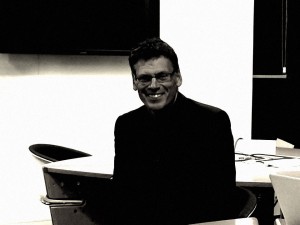 One look at the professor, entering an intimate class of 12 (and sometimes less) and you know that he’s got a bag-full of knowledge to share. And sharing he so articulately does.
One look at the professor, entering an intimate class of 12 (and sometimes less) and you know that he’s got a bag-full of knowledge to share. And sharing he so articulately does.
Professor Paul Gough is the Pro Vice-Chancellor and Vice President of RMIT’s School of Design and Social Context. He’s a big boss with the intimate knowledge of all things space and place…and what a privilege it was to hear from him.
Firstly, Paul asks us this question:
“How does something become a memorial?” and connected to it, “Why do we even produce memorials?” Societies tend to remember those that are gone. And looking at the U.K. and even Europe in general, the continent is a patchwork quilt of places that celebrate remembrance of history, the absent dead that once traversed its fertile soil.
We’ve all been tourists once. And I’m glad Rachel, our tutor, asked us of particular monuments and statues we’ve come across in our journey of exploration and admiration of the memorial art. Japan, Croatia, Vietnam, Berlin, Philippines, Paris, Rome, to name a few in our class of 12 (and sometimes less). But how rich is our collective experiences, already! Paul states these five reasons as to why statues and monuments are integral to society since the Ancients till now:
- Focal point of grief
- Index of memory
- Names of remembrance
- Planned icon within furniture of the city
- Ritual – annual celebration, reverential
And then there’s the 3 stages in the Lifecycle of a Monument: the public memory (what people focus on, celebrate, commemorate and grieve), the institutionalised (i.e. 9/11) and ownership.
I’ve been challenged to think of memorials, monuments and statues in this certain way that Paul has elaborated on. I’ve almost always seen them simply as a physical definition of memory. A remembrance of something, and so I give my reverence and honour due. Never have I asked the question of why exactly is it remembered. The ANZAC memorial service, the one minute silence that permeated in the bowling alley I found myself that Saturday morning. Why do we remember our dead? Why is it “lest we forget?” Similar to the Hiroshima bombings, why do we preserve it? Is it for tourism, heritage? For people to come upon it and caress the bloodshed with our reverential eyes?
Paul had an answer to it all.
It’s because there is that fear of being forgotten.
And to our human condition, it is absolutely, unconditionally traumatic.